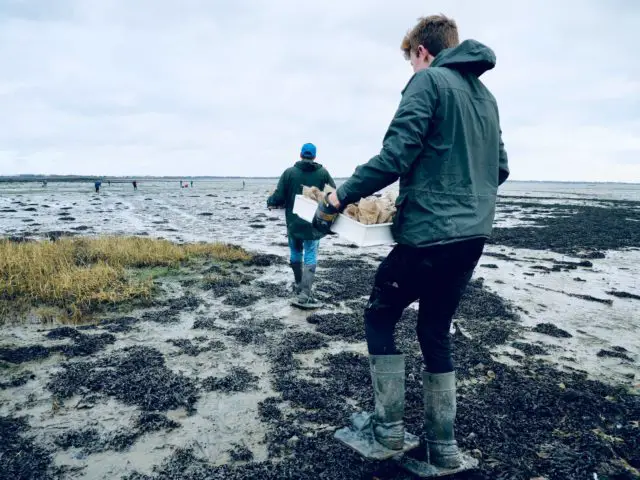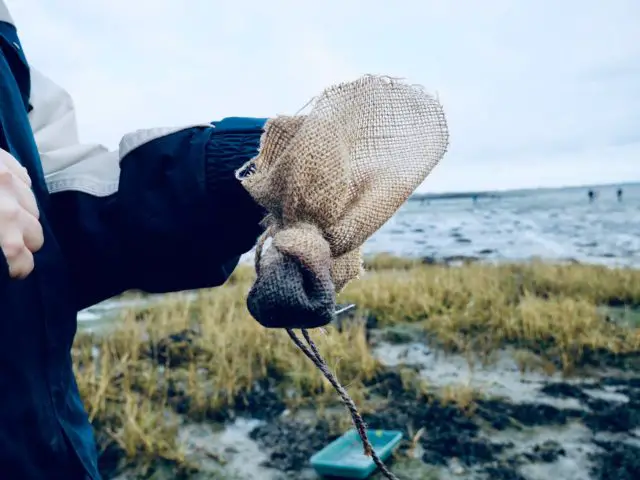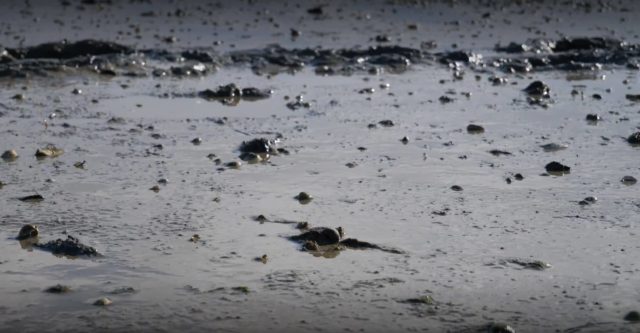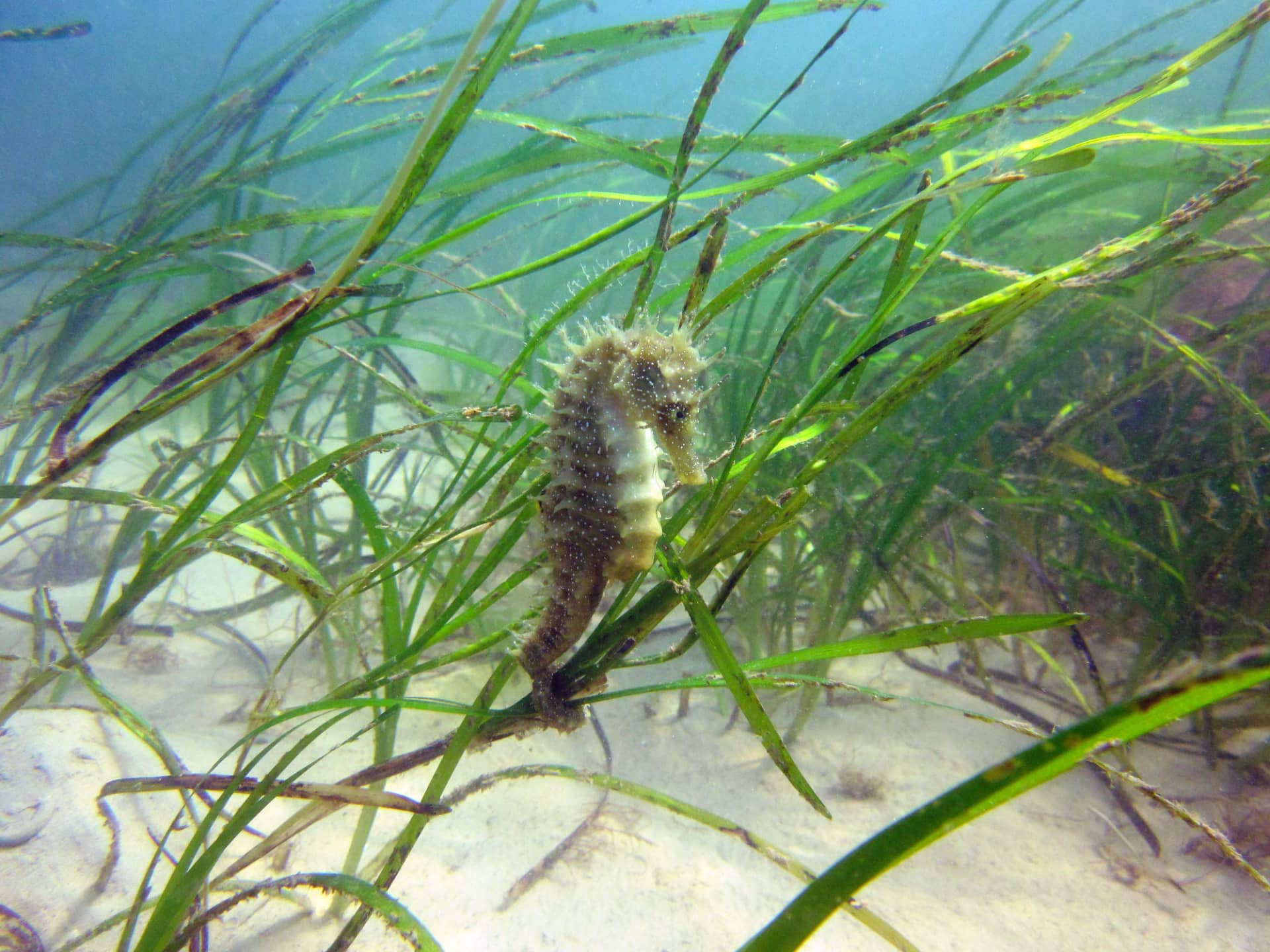A project to restore environmentally important seagrass beds in the Solent remains on track after surviving the recent storms – a welcome boost on World Seagrass Day (1st March).
A team of specialists, including from Hampshire and Isle of Wight Wildlife Trust, hand-planted over 21,000 seagrass seeds at Langstone Harbour near Portsmouth in December 2021.
Fears after Storms Eunice and Franklin
However, despite being protected inside hessian bags, it was feared the seeds may have been washed away during storms Eunice and Franklin in February.

The Trust recently inspected the harbour and, thankfully, found the planting bags had survived relatively unscathed and the project is still on course – it’s hoped seagrass shoots will start to appear in April.
This success is coupled with evidence that some seeds kept for monitoring in aquariums at the University of Portsmouth are beginning to germinate.

With its dense network of roots, seagrass binds sediment together making the sand or mud more stable, which slows down coastal erosion. Seagrass is also a globally important carbon sink – studies have shown that some species of seagrass can even store more carbon than the rainforests.
Ferrero: The signs are good that the project remains on track
Dr Tim Ferrero, who is the Trust’s Senior Marine Biologist and leads on the Solent Seagrass Restoration Project, said,
“We were very concerned the recent terrible weather would have destroyed our restoration, but we’ve been out to inspect the site and the signs are good that the project remains on track.
“Seagrasses are amazing native marine plants that provide an impressive number of environmental services – creating a vital habitat for wildlife, supporting fisheries, protecting our shores from erosion, and capable of fighting climate change as one of our most effective natural carbon stores. Sadly, this natural wonder has suffered significant declines over the past century.
“By regenerating seagrass habitats, we will create a Wilder Solent, supporting increased biodiversity and sustainable fisheries, promoting greater ecosystem services, cleaner water and creating a natural blue carbon solution to mitigate the effects of climate change.”
The Trust, in partnership with Boskalis Westminster and working the University of Portsmouth Langstone Harbour Board, plans to plant a second batch of seagrass seeds later in March at Langstone Harbour, as well as at Seaview on the Isle of Wight.

In October 2019, the Trust launched its Wilder 2030 strategy, which calls for a wilder future and 30% of land and sea restored for nature’s recovery by 2030. The Solent Seagrass Restoration Project is a vital piece of the puzzle in working towards the Trust’s to restore seagrass habitats in the Solent to their historical levels and in all locations that could support it.
News shared by Jake on behalf of Hampshire & Isle of Wight Wildlife Trust. Ed
Image: © Seagrasses support wildlife such as seahorses by Julie Hatcher





